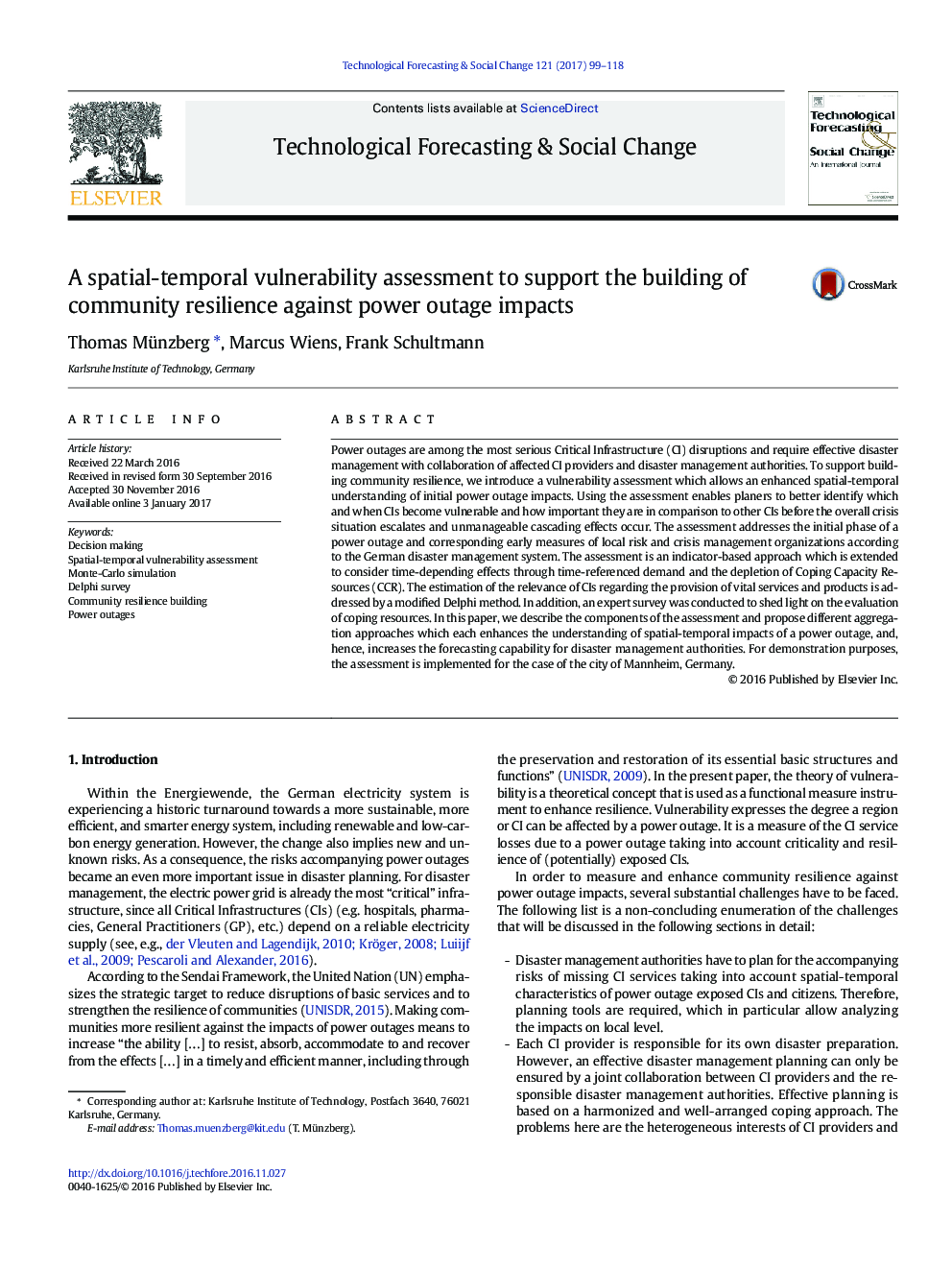| Article ID | Journal | Published Year | Pages | File Type |
|---|---|---|---|---|
| 5036871 | Technological Forecasting and Social Change | 2017 | 20 Pages |
â¢A vulnerability assessment for evaluating power outage impacts is proposed.â¢Assessment basics are criticality and coping capacity of critical infrastructures.â¢Result provides valuable spatial-temporal insights for disaster management.â¢Method makes it possible to identify escalation courses and tipping points.â¢Resilience building is fostered through transparency and facilitated collaboration.
Power outages are among the most serious Critical Infrastructure (CI) disruptions and require effective disaster management with collaboration of affected CI providers and disaster management authorities. To support building community resilience, we introduce a vulnerability assessment which allows an enhanced spatial-temporal understanding of initial power outage impacts. Using the assessment enables planers to better identify which and when CIs become vulnerable and how important they are in comparison to other CIs before the overall crisis situation escalates and unmanageable cascading effects occur. The assessment addresses the initial phase of a power outage and corresponding early measures of local risk and crisis management organizations according to the German disaster management system. The assessment is an indicator-based approach which is extended to consider time-depending effects through time-referenced demand and the depletion of Coping Capacity Resources (CCR). The estimation of the relevance of CIs regarding the provision of vital services and products is addressed by a modified Delphi method. In addition, an expert survey was conducted to shed light on the evaluation of coping resources. In this paper, we describe the components of the assessment and propose different aggregation approaches which each enhances the understanding of spatial-temporal impacts of a power outage, and, hence, increases the forecasting capability for disaster management authorities. For demonstration purposes, the assessment is implemented for the case of the city of Mannheim, Germany.
